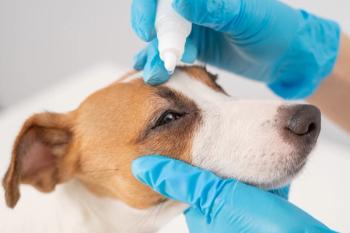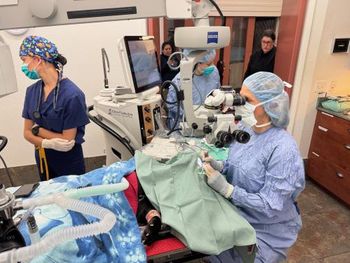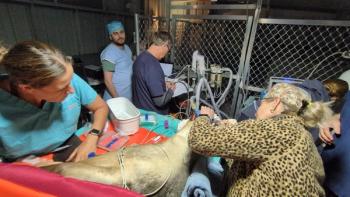
Just Ask the Expert: What is a normal Schirmer tear test result?
Most sources state that the reference range of Schirmer tear test values is 15 to 20 mm/min in most species.
Dr. Gionfriddo welcomes ophthalmology questions from veterinarians and veterinary technicians.
The Schirmer tear test is a useful technique to assess tear production, especially in cases of keratoconjunctivitis sicca. References sometimes vary in their descriptions of normal values for dogs and cats. Please discuss the values you trust, what your minimums are, and any fine points you might offer on the procedure.
R. Wayne Randolph, VMD, DABVP
Countryside Veterinary Hospital
Flemington, N.J.
Most sources state that the reference range of Schirmer tear test (STT) values is 15 to 20 mm/min in most species. But when considering the STT results, you must consider several factors. First, older dogs frequently have STT values lower than 15 mm/min but have no clinical signs of keratoconjunctivitis sicca (KCS). In addition, some animals, especially cats, have very low values (many are 0) when they are stressed in a clinic environment yet have no clinical signs of KCS.
Juliet R. Gionfriddo, DVM, MS, DACVO
Thus, I determine whether reduced tear production is meaningful based on two factors: 1) a lower-than-15 mm/min STT value and 2) clinical signs of KCS. For example, if an animal is presented that has a red eye or ocular discharge and a STT result of 10 to 14 mm/min, I suspect that decreased tear production is causing it—unless I can find another cause such as a corneal ulcer. On the other hand, if a cat is presented for evaluation of an eyelid mass or iris discoloration but no signs of red eye, squinting, or ocular discharge and has a STT result of 1 mm/min, I will assume that the low result is due to stress and will not treat the cat for reduced tear production.
The procedure for a STT is relatively straightforward. Use a commercial STT since these are standardized. Fold the strip at the notch, place the folded end of the strip inside and under the lower eyelid about 2 to 3 mm nasal to the lateral canthus, and leave it in the eye for one minute or until 15 mm of wetting is achieved.
An alternative for measuring tears is a phenol red thread test. This test uses a small thread impregnated with dye and is excellent for patients with very small eyes such as exotics. In this test, the thread is held with a small forceps and placed in the lateral one-third of the lower palpebral margin. It is left in place for 15 seconds. In dogs, the reference range for normal tear production is 25 to 43 mm/15 seconds.
Juliet R. Gionfriddo, DVM, MS, DACVO
Department of Clinical Sciences
College of Veterinary Medicine and Biomedical Sciences
Colorado State University
Fort Collins, CO 80523
Newsletter
From exam room tips to practice management insights, get trusted veterinary news delivered straight to your inbox—subscribe to dvm360.




